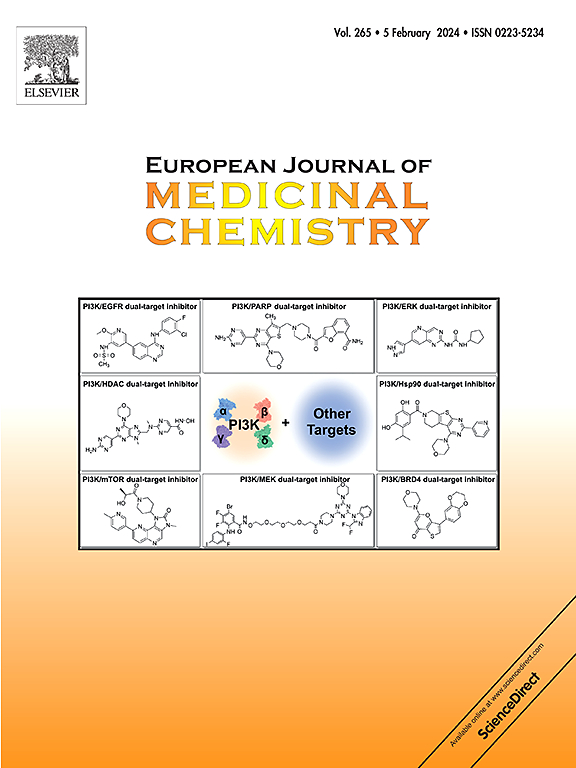Structural simplification of quaternary benzophenanthridine alkaloids generating a candidate for the treatment of non-small cell lung cancer
IF 6
2区 医学
Q1 CHEMISTRY, MEDICINAL
引用次数: 0
Abstract
Quaternary benzophenanthridine alkaloids (QBAs), such as sanguinarine, chelerythrine, and nitidine, possess diverse pharmacological activities. This study presents a simplified structure for QBAs, yielding twelve three-membered phenanthridine alkaloids. Notably, compound 6f demonstrates enhanced potency in selectively inhibiting thioredoxin reductase (TrxR, TXNRD) and exhibits significant cytotoxicity against non-small cell lung cancer (NSCLC) cells. While TrxR is a selenoenzyme, many of its inhibitors react with biological thiols; however, 6f shows minimal reactivity with thiols such as glutathione (GSH) and cysteine. Mechanistic investigations reveal that 6f stimulates reactive oxygen species production, reduces intracellular thiols, and decreases the GSH/GSSG ratio, leading to cell apoptosis through oxidative stress. Moreover, significant tumor regression has been observed in nude mice with NSCLC following treatment with 6f. The pronounced anticancer activity and possible mechanism of action of 6f suggest its potential as a candidate for further development in NSCLC therapy.


求助全文
约1分钟内获得全文
求助全文
来源期刊
CiteScore
11.70
自引率
9.00%
发文量
863
审稿时长
29 days
期刊介绍:
The European Journal of Medicinal Chemistry is a global journal that publishes studies on all aspects of medicinal chemistry. It provides a medium for publication of original papers and also welcomes critical review papers.
A typical paper would report on the organic synthesis, characterization and pharmacological evaluation of compounds. Other topics of interest are drug design, QSAR, molecular modeling, drug-receptor interactions, molecular aspects of drug metabolism, prodrug synthesis and drug targeting. The journal expects manuscripts to present the rational for a study, provide insight into the design of compounds or understanding of mechanism, or clarify the targets.

 求助内容:
求助内容: 应助结果提醒方式:
应助结果提醒方式:


